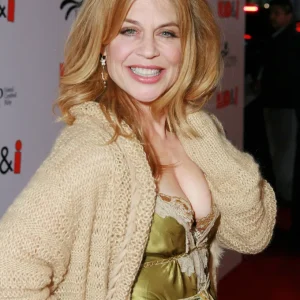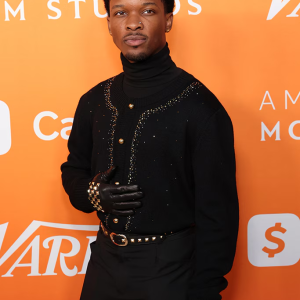Debbie Gibson, a quintessential icon of the 1980s pop music scene, has long held her place as one of the most influential teenage pop stars of her era. With her catchy tunes, undeniable talent, and impressive songwriting skills, Gibson’s career has spanned over three decades, evolving from teen sensation to respected musician, actress, and producer. This comprehensive biography dives into Debbie Gibson’s life, career highlights, and what she is doing today.

Deborah Ann Gibson was born on August 31, 1970, in Brooklyn, New York. Raised in Merrick, Long Island, she was the third of four daughters in a close-knit family. From an early age, it was clear Debbie had an extraordinary gift for music. At just five years old, she began studying piano, and by six, she was already writing her first song. Her childhood was marked by hours spent honing her craft, a dedication that would later propel her to stardom.
With her parents’ unwavering support, Debbie pursued formal voice and piano training under renowned coach Morton Estrin. By the time she was a teenager, she was already recording and composing original songs, exhibiting an exceptional understanding of music far beyond her years.
The Big Break: Out of the Blue and Stardom

Debbie Gibson’s breakthrough came in 1986 when, at just 16 years old, she signed with Atlantic Records. A year later, her debut album Out of the Blue was released, and it catapulted her to instant fame. The album, written, performed, and produced by Gibson herself, became a massive hit, featuring several chart-topping singles including “Only in My Dreams,” “Shake Your Love,” and the ballad “Foolish Beat.” Notably, “Foolish Beat” made history as it hit No. 1 on the Billboard Hot 100, making Debbie the youngest female artist to write, produce, and perform a No. 1 single—a record she still holds today.
The overwhelming success of Out of the Blue, which went triple platinum, solidified Debbie’s status as a teen pop sensation. Her heartfelt lyrics, infectious melodies, and youthful energy struck a chord with audiences around the world, making her a household name during the late 1980s.
Electric Youth: Reaching New Heights
In 1989, Debbie Gibson released her second studio album, Electric Youth, further cementing her as a global superstar. The lead single, “Lost in Your Eyes,” became one of her signature hits, reaching No. 1 on the Billboard Hot 100. The album itself topped the Billboard 200 for five consecutive weeks and went double platinum.
Electric Youth wasn’t just a commercial success—it showcased Debbie’s evolution as an artist. She took on even more creative control, further expanding her songwriting and production skills. The album’s title track, “Electric Youth,” became an anthem, embodying the vibrancy and optimism of the generation growing up in the 1980s.
Challenging the Industry Shift: Growing as an Artist

As the music scene shifted in the early 1990s with the rise of grunge and alternative rock, Debbie Gibson faced the challenge of transitioning from teen pop star to mature artist. Her third studio album, Anything Is Possible (1990), reflected this change in tone, featuring a more sophisticated sound with elements of rock and R&B. Though it didn’t reach the commercial heights of her previous albums, it demonstrated her versatility as a musician and songwriter.
Determined to break free from her teen idol image, Debbie continued to evolve her sound and broaden her artistic horizons.
Broadway and Acting: A New Stage

In the early 1990s, Debbie Gibson began transitioning into acting, making her Broadway debut in 1992 as Eponine in Les Misérables. Her impressive vocal range and ability to captivate audiences made her a natural fit for the stage. This marked the beginning of a successful theater career, with roles in major productions such as Grease, Beauty and the Beast, and Chicago.
Her Broadway performances earned her critical acclaim and proved that Debbie’s talents extended far beyond pop music. Throughout the 1990s and early 2000s, she balanced her music career with her acting endeavors, demonstrating her versatility as an entertainer.
Overcoming Challenges: Resilience and Reinvention
Like many artists who achieved massive fame at a young age, Debbie Gibson faced her share of personal and professional challenges. The pressures of fame, coupled with the rapidly changing music industry, tested her resilience. She continued releasing music throughout the 1990s and early 2000s, with several albums released independently, reflecting her desire to maintain creative control.
In the 2010s, Debbie faced a major health challenge when she was diagnosed with Lyme disease, forcing her to temporarily step back from her career. Despite the difficult journey, Debbie remained open about her struggles, using her experience to inspire others facing similar battles.
A Resurgence in Popularity: Debbie Today

In recent years, Debbie Gibson has experienced a resurgence in popularity. In 2017, she competed on Dancing with the Stars, where her charisma and fan base once again shone through. In 2021, she celebrated the 35th anniversary of her debut single “Only in My Dreams” by releasing new music and embarking on a summer tour. Her latest material reflects her evolution as an artist while staying true to her pop roots.
Debbie continues to be a vibrant presence in the entertainment world, mentoring younger artists, exploring new creative projects, and producing music. Her influence on the pop landscape remains undeniable, and her iconic hits from the 1980s, including “Lost in Your Eyes,” “Foolish Beat,” and “Electric Youth,” continue to resonate with fans of all ages.

Debbie Gibson’s journey from teenage pop sensation to respected artist is a testament to her talent, resilience, and dedication. Her early achievements in the 1980s paved the way for future generations of female artists seeking creative control over their careers. As an artist, actress, and producer, she has consistently reinvented herself while remaining true to her musical roots.
Today, Debbie Gibson continues to inspire with her unwavering passion for performance, leaving an indelible mark on the world of music and entertainment. As she looks toward the future, there is no doubt that her legacy as one of pop culture’s most enduring figures will only continue to grow.


